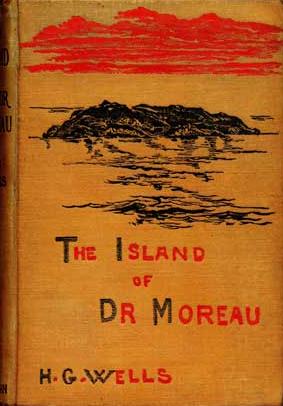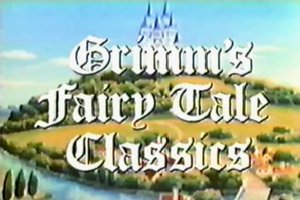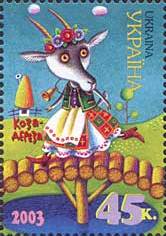
In mythology, folklore and speculative fiction, shapeshifting is the ability to physically transform oneself through unnatural means. The idea of shapeshifting is found in the oldest forms of totemism and shamanism, as well as the oldest existent literature and epic poems such as the Epic of Gilgamesh and the Iliad. The concept remains a common literary device in modern fantasy, children's literature and popular culture. Examples of shapeshifters are vampires and werewolves.

Uncle Remus is the fictional title character and narrator of a collection of African American folktales compiled and adapted by Joel Chandler Harris and published in book form in 1881. Harris was a journalist in post–Reconstruction era Atlanta, and he produced seven Uncle Remus books. He did so by introducing tales that he had heard and framing them in the plantation context. He wrote his stories in a dialect which was his interpretation of the Deep South African-American language of the time. For these framing and stylistic choices, Harris's collection has garnered controversy since its publication.

The Island of Doctor Moreau is an 1896 science fiction novel by English author H. G. Wells. It was published on 1 January 1896. The novel is set between 21 January 1887 to 5 January 1888. The text of the novel is the narration of Edward Prendick, a shipwrecked man rescued by a passing boat. He is left on the island home of Doctor Moreau, a mad scientist who creates human-like hybrid beings from animals via vivisection. The novel deals with a number of themes, including pain and cruelty, moral responsibility, human identity, human interference with nature, and the effects of trauma. Wells described it as "an exercise in youthful blasphemy."

Grimm's Fairy Tale Classics, also known as Grimm Masterpiece Theater in the original version and The Grimm's Fairy Tales, is a Japanese anime anthology series by Nippon Animation based on the Grimms' Fairy Tales.

The Tar-Baby is the second of the Uncle Remus stories published in 1881; it is about a doll made of tar and turpentine used by the villainous Br'er Fox to entrap Br'er Rabbit. The more that Br'er Rabbit fights the Tar-Baby, the more entangled he becomes.

Little Red Riding Rabbit is a 1944 Warner Bros. Merrie Melodies cartoon, directed by Friz Freleng, and starring Bugs Bunny. It is a sendup of the "Little Red Riding Hood" story, and is the first time in which Mel Blanc receives a voice credit.

"East of the Sun and West of the Moon" is a Norwegian fairy-tale. It was included by Andrew Lang in The Blue Fairy Book (1889).
Ruth Manning-Sanders was an English poet and author born in Wales, known for a series of children's books for which she collected and related fairy tales worldwide. She published over 90 books in her lifetime

Kolobok is the main character of an East Slavic fairy-tale with the same name, represented as a small yellow spherical bread-like being. The story is often called "Little Round Bun" and sometimes "The Runaway Bun."

Ukrainian folklore is the folk tradition which has developed in Ukraine and among ethnic Ukrainians. The earliest examples of folklore found in Ukraine is the layer of pan-Slavic folklore that dates back to the ancient Slavic mythology of the Eastern Slavs. Gradually, Ukrainians developed a layer of their own distinct folk culture. Folklore has been an important tool in defining and retaining a cultural distinctiveness in Ukraine in the face of strong assimilatory pressures from neighboring lands.

Br'er Rabbit is a central figure in an oral tradition passed down by African-Americans of the Southern United States and African descendants in the Caribbean, notably Afro-Bahamians and Turks and Caicos Islanders. He is a trickster who succeeds by his wits rather than by brawn, provoking authority figures and bending social mores as he sees fit. Popular adaptations of the character, originally recorded by Joel Chandler Harris in the 19th century, include Walt Disney Productions' Song of the South in 1946.
Masha and the Bear is a Russian preschool comedy animated television series created by Oleg Kuzovkov and produced by Animaccord Animation Studio, loosely based on the oral children's folk story of the same name. The series focuses on the adventures of a very young girl named Masha and a bear, her caring friend who always keeps her safe from disasters.

Ukrainian animation, which began in the late 1920s, is part of Ukrainian cinematography and has involved a variety of techniques, including frame-by-frame filming, time lapse, and computer animation.

Koza-dereza is an opera for children in one act by the Ukrainian composer Mykola Lysenko written in 1888 and first performed in 1890 in Lysenko's home in Kyiv.

Mr. Kotsky is an 1891 children's opera, based on the traditional Ukrainian fairy tale. The Ukrainian fairy tale is also called "The Story of Mr Kotsky", Sir Cat-o-Puss, Pan Kotsky, or Sir Puss O'Cat. The 1891 children's opera, Mr Kotsky, is by the Ukrainian composer Mykola Lysenko, with a libretto by Dniprova Chayka.
Vyacheslav Levandovsky, considered to be the founder of Ukrainian animation, was a Ukrainian animator whose 1927 film "The Fairy Tale of the Straw Bull", filmed at his Odesa studio, was the first filmed Ukrainian animation.
The Flying Ship is an East Slavic or Eastern European folk tale, considered a Ukrainian folk tale in some collections, as well as a Russian folk tale in others. In retellings, it is also called The Ship That Flew, Fool of the World and the Flying Ship, and The Fool and the Flying Ship.

Bully Goat, also called Koza-Dereza, Koza Dereza, Billy Goat's Bluff, or Nibbly-Quibbly the Goat, is a Ukrainian fairy tale, folk tale, and fable about a goat who acts like a bully.












